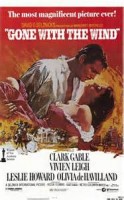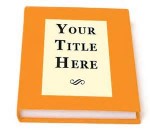 You know you’ve done it. Perused the shelves at a local book store, looking through hundreds of volumes, trying to choose one to take home. You might have picked up a couple because the covers were so attractive. But the titles? Meh.
You know you’ve done it. Perused the shelves at a local book store, looking through hundreds of volumes, trying to choose one to take home. You might have picked up a couple because the covers were so attractive. But the titles? Meh.
Ah, but the one you chose….what really made you look inside? You bet. It was that title!
Just for laughs, I searched to see if there was information on discarded book titles. Here’s a few gems:
- Gone with the Wind was originally Mules in Horses’ Harness.
- Hemingway had problems. A Moveable Feast was The Eye and the Ear. A Farewell to Arms was The Sentimental Education of Frederick Henry. And The Sun Also Rises was originally called Fiesta.
- Oh, dear. Fitzgerald had trouble, too. The Great Gatsby went through several changes. Among Ash-Heaps and Millionaires, The High-Bouncing Lover, and Timalchio in West Egg were only three of them.
- War and Peace was… All’s Well that Ends Well. Really!
- Steinbeck’s Of Mice and Men originally sold as Something That Happened.
- And Alice’s Adventures in Wonderland? Just Alice.
Sol Stein (Stein on Writing) says take note of your own reaction to titles. Which ones tempt you, and which ones don’t? Gain an understanding of exactly why that happens. Which of those reactions do you want to generate when it’s YOUR book on the shelf?
So, how do you pick a title? An article in Writers’ Digest from 2009 gives these tips, still good:
- GOOGLE IT. See if it’s already been ‘done’.
- MAXIMIZE YOUR CHOICES. Make a list of five, and get others’ opinions.
- DON’T FORGET VOICE AND POINT OF VIEW. If it’s told in third person, then ‘My Summer Vacation’ just isn’t right.
- INCLUDE PRECISE NOUNS AND ACTIVE VERBS. Eugene O’Neill’s Desire Under the Elms is far more compelling than Love Under the Trees would have been.
- CRAFT TWO MEANINGS. Many successful titles gain hidden layers of meaning as they’re read.
- AVOID SABOTAGING YOUR PLOT WITH YOUR TITLE. No explanation needed here.
- MAKE CERTAIN YOUR TITLE MATCHES YOUR STORY. Ask yourself, once your manuscript is complete, whether the original title still works with the story you’ve told.
 These seven aren’t the only ways. If it’s catchy, or creates curiosity, or simply quirky, it could work. How about The Effect of Gamma Rays on Man-In-The-Moon Marigolds?
These seven aren’t the only ways. If it’s catchy, or creates curiosity, or simply quirky, it could work. How about The Effect of Gamma Rays on Man-In-The-Moon Marigolds?
As the Writers’ Digest article points out, “You want to choose something that makes your readers (and other writers) think: What a fantastic title! Why didn’t I come up with it?”.
Oh, Yes. Faulkner’s The Sound and the Fury, considered possibly the best-titled book of all time, was supposed to be released under the title Twilight. Gee…what would Stephenie Meyer have done?






What an interesting post!! Its true, a title can make or break a book. It is almost a relief to know that some of the great writers have/had problems just like us “average” writers do. LOL.
I am always likening writing a book to having a baby … takes a long time, painful, lack of control, etc. And I have the same problem naming the “baby”. My working title right now is a #6.